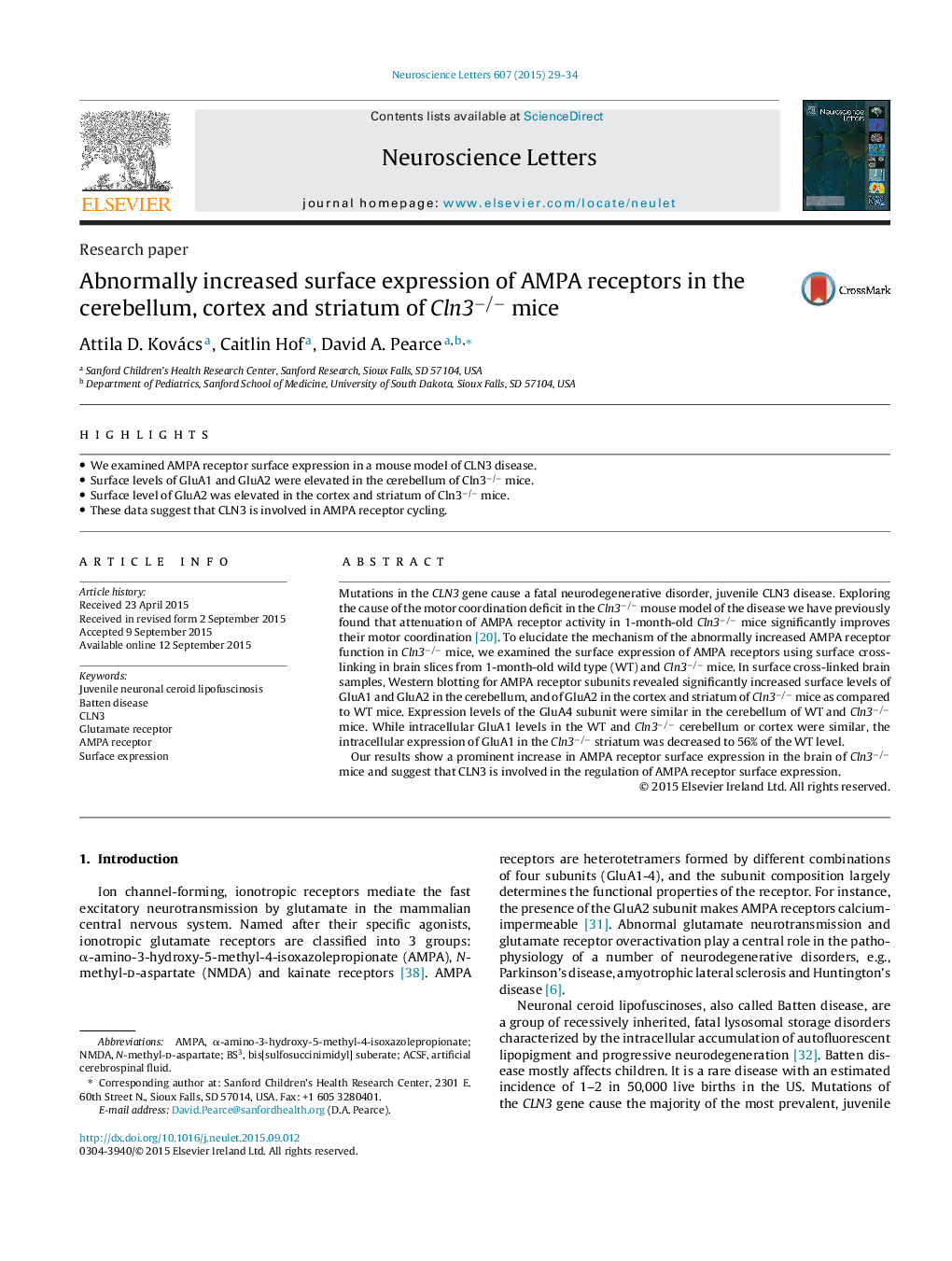| کد مقاله | کد نشریه | سال انتشار | مقاله انگلیسی | نسخه تمام متن |
|---|---|---|---|---|
| 6280580 | 1615092 | 2015 | 6 صفحه PDF | دانلود رایگان |

- We examined AMPA receptor surface expression in a mouse model of CLN3 disease.
- Surface levels of GluA1 and GluA2 were elevated in the cerebellum of Cln3â/â mice.
- Surface level of GluA2 was elevated in the cortex and striatum of Cln3â/â mice.
- These data suggest that CLN3 is involved in AMPA receptor cycling.
Mutations in the CLN3 gene cause a fatal neurodegenerative disorder, juvenile CLN3 disease. Exploring the cause of the motor coordination deficit in the Cln3â/â mouse model of the disease we have previously found that attenuation of AMPA receptor activity in 1-month-old Cln3â/â mice significantly improves their motor coordination [20]. To elucidate the mechanism of the abnormally increased AMPA receptor function in Cln3â/â mice, we examined the surface expression of AMPA receptors using surface cross-linking in brain slices from 1-month-old wild type (WT) and Cln3â/â mice. In surface cross-linked brain samples, Western blotting for AMPA receptor subunits revealed significantly increased surface levels of GluA1 and GluA2 in the cerebellum, and of GluA2 in the cortex and striatum of Cln3â/â mice as compared to WT mice. Expression levels of the GluA4 subunit were similar in the cerebellum of WT and Cln3â/â mice. While intracellular GluA1 levels in the WT and Cln3â/â cerebellum or cortex were similar, the intracellular expression of GluA1 in the Cln3â/â striatum was decreased to 56% of the WT level.Our results show a prominent increase in AMPA receptor surface expression in the brain of Cln3â/â mice and suggest that CLN3 is involved in the regulation of AMPA receptor surface expression.
Journal: Neuroscience Letters - Volume 607, 21 October 2015, Pages 29-34